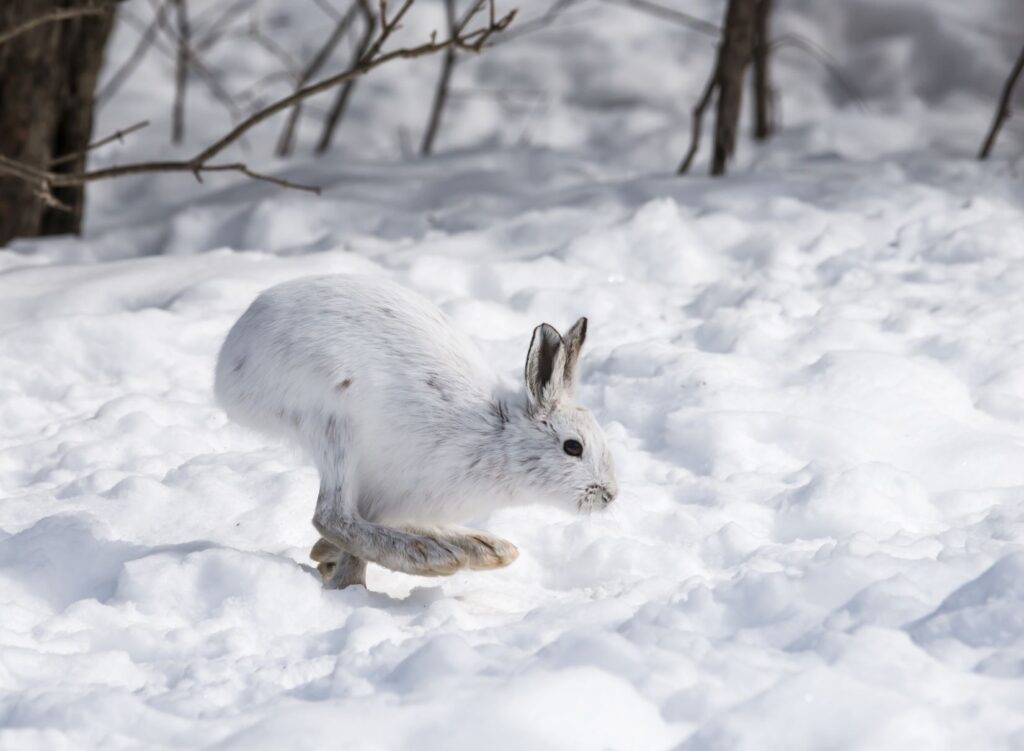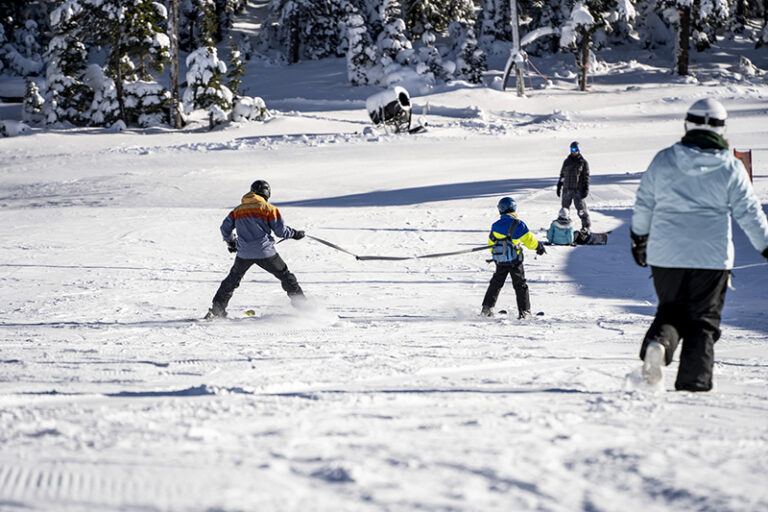What could be a more quintessential winter wildlife species than the snowshoe hare (Lepus americanus)? This animal is especially adapted to the winter world. For most of the year their fur is tawny to match the brown leaf litter of the forest, but come winter, they turn almost entirely white except for the very tips of their ears, which are always black. This helps them blend into snow-covered landscapes and evade predators.
Their name sake, snowshoe, comes from their huge hind feet with larger toes and more hair compared to other rabbits and hares. This allows them to hop over soft snow better than most species and to jump up to 12 feet in a single bound.
Snowshoe hares are members of the order of Lagomorphs, which include rabbits and those high-altitude pikas. This order is also known as “peg teeth” because they have four incisors as opposed to just two in rodents. They are also almost entirely obligate herbivores, unlike rodents, which will eat meat and plants. Hares are different from other Lagomorphs with larger limbs and bodies, and they are born furred and with good eyesight, ready to move soon after birth.
Snowshoe hare range across boreal and higher-altitude forests of North America. They prefer areas of dense shrub to provide cover, their preferred food, and protected areas for their above-ground nests. They are relatively abundant with the ability to have up to four litters a year, each with up to eight young per litter.
Their abundant number make them key prey for one predator in particular, the Canada lynx, which rely almost exclusively on this hare as a food source. The relationship between lynx and snowshoe hare has been long studied, particularly because the snowshoe hare’s population undergoes a cycle with a peak in numbers averaging every 10 years.

There are several interacting reasons for the cyclic amplitude of snowshoe hare populations. One is as lynx populations rise, they eat more hares; then, as their prey numbers decline, so do the population of lynx. But more recently studies have revealed other factors that influence the population. As hare populations boom, so does browse pressure on their preferred plants, which can reduce the quality and quantity of browse.
When adult feltleaf willow are browsed to stumps, they produce stump sprouts that are of low in nutrition value and resistant to browse. This relaxes after three years when twig heights increase, and they become more available above snow cover for winter browse.
Other plants like the shrub birch produce toxins in the tip of their young shoots. Hares wait till the plants are older. Then they snip off and eat these older segments, discarding the toxic tips.
Other recent research has shown that hare populations can help balance habitat effects caused from other species. Along some Alaskan rivers, heavy moose browse has shifted plant communities to be dominated by heavily defensive plant species such as white spruce. However, an abundant snowshoe hare population feeding on white spruce saplings help to maintain more plant diversity.
When you are out exploring this winter, look for their classic tracks in the snow with the large hind feet landing in front of the smaller fore feet. These tracks can tell you a bit of the story of many important woodland species.
Adam Gebauer is a biologist and distracted mountain athlete. He has more than once tried to follow snowshoe hare tracks in snow while out exploring.













